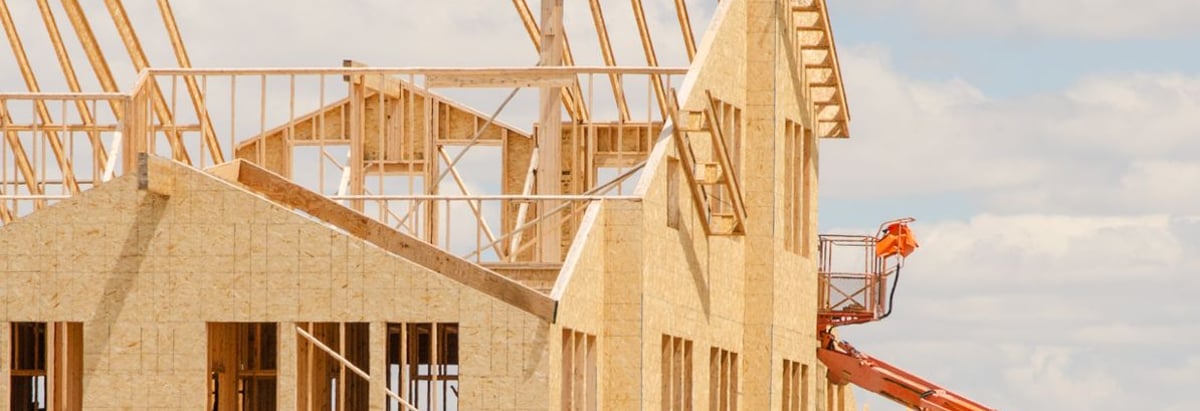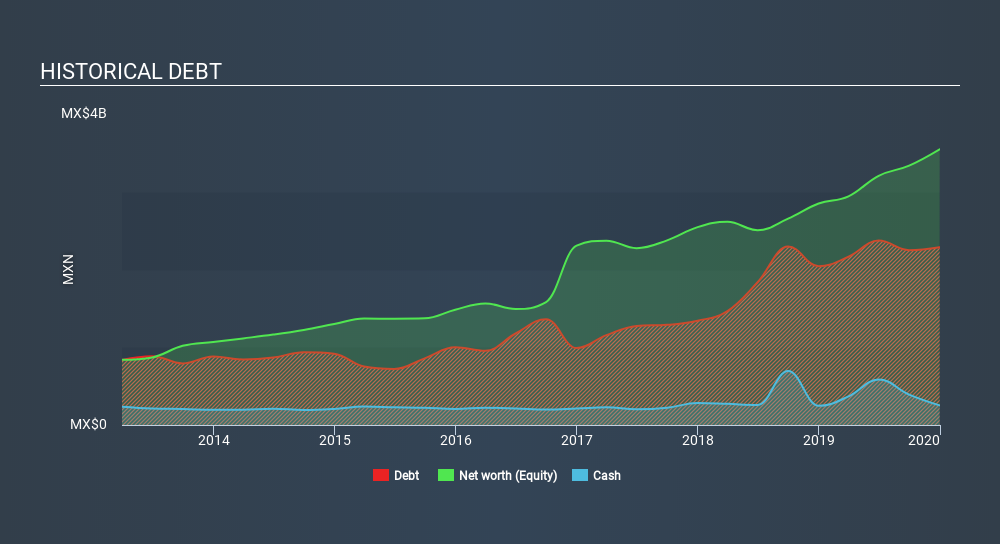- Mexico
- /
- Consumer Durables
- /
- BMV:VINTE *
Vinte Viviendas Integrales. de (BMV:VINTE) Has A Somewhat Strained Balance Sheet

Some say volatility, rather than debt, is the best way to think about risk as an investor, but Warren Buffett famously said that 'Volatility is far from synonymous with risk'. It's only natural to consider a company's balance sheet when you examine how risky it is, since debt is often involved when a business collapses. We note that Vinte Viviendas Integrales, S.A.B. de C.V. (BMV:VINTE) does have debt on its balance sheet. But is this debt a concern to shareholders?
When Is Debt Dangerous?
Debt assists a business until the business has trouble paying it off, either with new capital or with free cash flow. Ultimately, if the company can't fulfill its legal obligations to repay debt, shareholders could walk away with nothing. While that is not too common, we often do see indebted companies permanently diluting shareholders because lenders force them to raise capital at a distressed price. Of course, debt can be an important tool in businesses, particularly capital heavy businesses. When we think about a company's use of debt, we first look at cash and debt together.
See our latest analysis for Vinte Viviendas Integrales. de
What Is Vinte Viviendas Integrales. de's Net Debt?
The image below, which you can click on for greater detail, shows that at December 2019 Vinte Viviendas Integrales. de had debt of Mex$2.29b, up from Mex$2.04b in one year. However, it does have Mex$252.3m in cash offsetting this, leading to net debt of about Mex$2.03b.

A Look At Vinte Viviendas Integrales. de's Liabilities
We can see from the most recent balance sheet that Vinte Viviendas Integrales. de had liabilities of Mex$1.26b falling due within a year, and liabilities of Mex$3.05b due beyond that. Offsetting these obligations, it had cash of Mex$252.3m as well as receivables valued at Mex$391.0m due within 12 months. So its liabilities outweigh the sum of its cash and (near-term) receivables by Mex$3.67b.
This is a mountain of leverage relative to its market capitalization of Mex$5.67b. This suggests shareholders would heavily diluted if the company needed to shore up its balance sheet in a hurry.
We measure a company's debt load relative to its earnings power by looking at its net debt divided by its earnings before interest, tax, depreciation, and amortization (EBITDA) and by calculating how easily its earnings before interest and tax (EBIT) cover its interest expense (interest cover). The advantage of this approach is that we take into account both the absolute quantum of debt (with net debt to EBITDA) and the actual interest expenses associated with that debt (with its interest cover ratio).
With net debt to EBITDA of 2.9 Vinte Viviendas Integrales. de has a fairly noticeable amount of debt. On the plus side, its EBIT was 8.7 times its interest expense, and its net debt to EBITDA, was quite high, at 2.9. We saw Vinte Viviendas Integrales. de grow its EBIT by 2.6% in the last twelve months. That's far from incredible but it is a good thing, when it comes to paying off debt. There's no doubt that we learn most about debt from the balance sheet. But you can't view debt in total isolation; since Vinte Viviendas Integrales. de will need earnings to service that debt. So when considering debt, it's definitely worth looking at the earnings trend. Click here for an interactive snapshot.
Finally, while the tax-man may adore accounting profits, lenders only accept cold hard cash. So it's worth checking how much of that EBIT is backed by free cash flow. Considering the last three years, Vinte Viviendas Integrales. de actually recorded a cash outflow, overall. Debt is far more risky for companies with unreliable free cash flow, so shareholders should be hoping that the past expenditure will produce free cash flow in the future.
Our View
We'd go so far as to say Vinte Viviendas Integrales. de's conversion of EBIT to free cash flow was disappointing. But on the bright side, its interest cover is a good sign, and makes us more optimistic. Once we consider all the factors above, together, it seems to us that Vinte Viviendas Integrales. de's debt is making it a bit risky. That's not necessarily a bad thing, but we'd generally feel more comfortable with less leverage. When analysing debt levels, the balance sheet is the obvious place to start. But ultimately, every company can contain risks that exist outside of the balance sheet. For instance, we've identified 3 warning signs for Vinte Viviendas Integrales. de (1 can't be ignored) you should be aware of.
When all is said and done, sometimes its easier to focus on companies that don't even need debt. Readers can access a list of growth stocks with zero net debt 100% free, right now.
If you spot an error that warrants correction, please contact the editor at editorial-team@simplywallst.com. This article by Simply Wall St is general in nature. It does not constitute a recommendation to buy or sell any stock, and does not take account of your objectives, or your financial situation. Simply Wall St has no position in the stocks mentioned.
We aim to bring you long-term focused research analysis driven by fundamental data. Note that our analysis may not factor in the latest price-sensitive company announcements or qualitative material. Thank you for reading.
About BMV:VINTE *
Vinte Viviendas Integrales. de
Vinte Viviendas Integrales, S.A.B. de C.V.
Fair value with moderate growth potential.
Market Insights
Community Narratives





